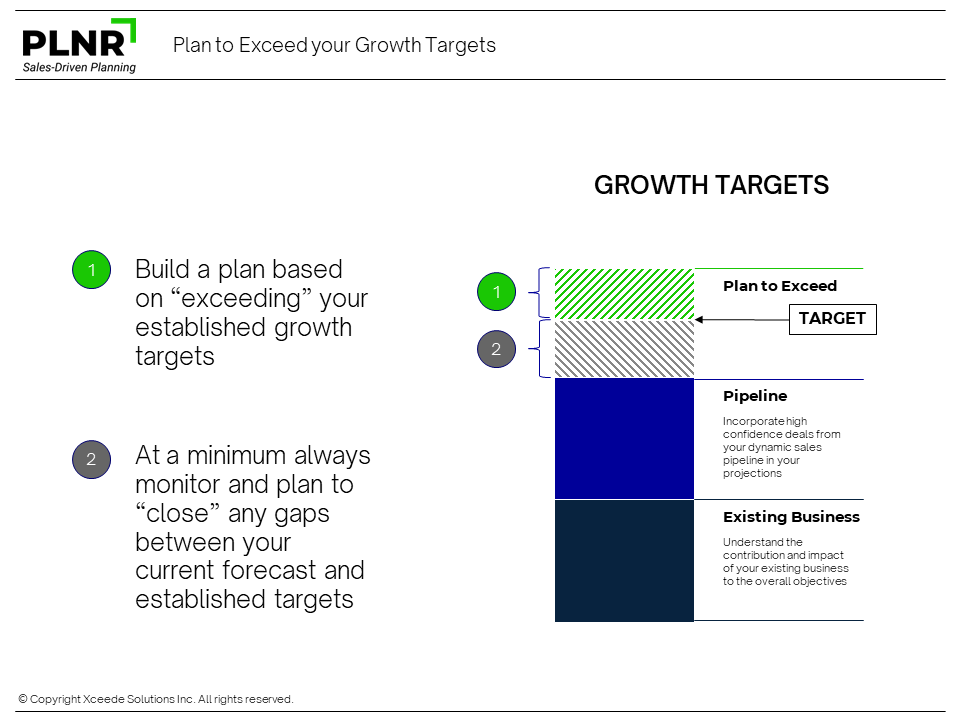The growth imperative for companies is hardly a new aspiration; however, with the advent of COVID-19, many found themselves ill-prepared to not only adapt to the changing marketplace but also remain on any sort of growth trajectory.
Today’s business environment is replete with paradigms, ideas, and approaches on how to achieve growth at the enterprise level — especially when considering the growth strategies employed by start-ups. This has led to an environment with too much “noise” on how to grow a business and created the need for concrete processes and tools that can be easily implemented within the organization effectively and predictably.
To achieve the focus on growth and ensure organizational alignment across functions, from Sales to Marketing and Operations, companies need to adopt a Sales-Driven Planning approach to build a single collaborative plan. Without such a focus and alignment, companies can waste enormous resources and investments on Sales and Marketing efforts that fail to deliver the desired growth.
A New Paradigm
Sales-Driven Planning
Sales-Driven Planning takes a market-centric approach to planning with a deep alignment of your offerings and resources to achieve your growth targets and beyond.
At the core, Sales-Driven Planning aims at incorporating marketplace reality into your growth plan starting with Sales to build a single collaborative plan which incorporates marketing, operational, and other strategies.
Marketplace Reality
Referred to as the “local experience”, Marketplace Reality becomes a critical element of planning your business in chaotic or disruptive market conditions; companies can’t expect the future to be a projection of the past and their planning cannot be built using historical trends.
Planning processes and tools have to enable the organization to survey and reflect marketplace reality in a rapid, efficient, and scalable manner.
We believe your Sales, Marketing, and other customer-facing teams are the most in tune with your Marketplace Reality and should be key contributors to your overall planning activities.
Sales-Driven Approach
This approach to planning puts the Sales organization in the driver’s seat to overall planning for the organization, with clearly defined markets (often translated into new and existing sales territories), a sales coverage model, and a clear set of defined investments to grow within these markets.
With each sales territory, the Sales team focuses on existing customers and new prospects to define their growth plan. Account Plans now include more concrete financial and non-financial KPIs that become the focus. Necessary sales activities become a critical component. Resources needed by Sales to achieve the desired growth can be aligned at either a territory or account level.
Single, Collaborative Plan
The organization needs to operate with a single, collaborative plan that aligns all the strategies and resources in order to deliver the desired growth.
While Sales can reflect their strategies within the plan, resources to support the plan comes from Marketing, Operations, and other customer-facing teams.
The Sales-Driven Planning approach creates a full alignment of resources across the organization.
A Sales-Driven Planning approach helps an organization easily (a) identify the “Gap to Target”, and (b) focus on “Gap mitigation” strategies and concrete actions.
Most companies rely on their Finance team to identify and analyze the “Gap to Target” and outline mitigation strategies at a high level. It is often very difficult to convert these strategies into action for the respective Sales, Marketing, Operation teams. As a result, the “Gap to Target” grows as the fiscal year progresses and other mitigation actions are taken, such as budget freezes and cuts which lead to more stress on the organization having to perform with fewer resources.
Instead, the focus should be placed more on anticipating “Gap to Target” and developing the “Gap mitigation” strategies through your forecasting activities within the front-line of Sales, Marketing, and Operations. This bottom-up build approach provides leadership not only an actionable and confident plan endorsed by their front-line teams, but also an informed roadmap to better deploy its resources when it comes to investments in Sales, Marketing, and Operations.

”What gets measured, gets done!




